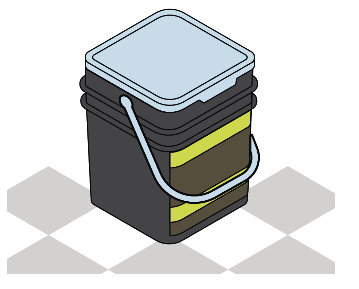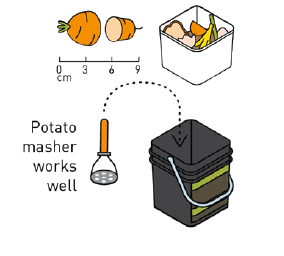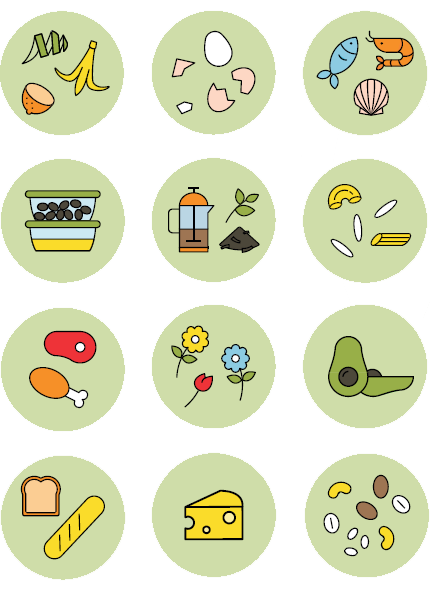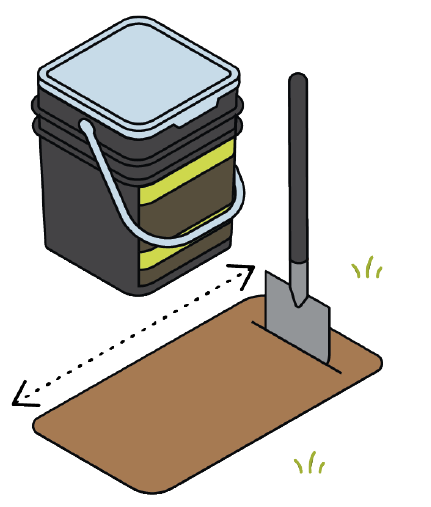Bokashi

Bokashi ferments or “pickles” your food waste with the help of a powdered culture. This fermentation decomposes food waste quickly, preventing slow decay and bad odour.
Bokashi is an oxygen-free, or anaerobic, system. It uses two buckets that sit inside each other. The top bucket holds your food waste and is sealed with an air-tight lid, while the bottom bucket collects liquid draining from the top bucket. Storage should be in a warm place out of direct sunlight, either inside or outside.
How to Bokashi
Chop your food scraps into pieces no bigger than a golf ball and store them in a bench-top container.
1. Add food waste once or twice daily to the Bokashi bucket.
2. Ensure you firmly squash down the food waste to push out any excess air.
3. Sprinkle 1–2 tablespoons of bokashi culture on top for every 6 centimetres of waste.
4. Close the bucket lid tightly after use.
Drain the liquid every 2 to 3 days from the bottom bucket. The food waste should smell like pickles and will develop a white mould on top. This means the system is working!

What to add
Bokashi bins are designed to collect all your food waste, including food you may not normally compost or feed to worms, like cooked and processed foods (eg, bread and pasta), or high protein foods (eg, cheese, eggs, meat, fish and small bones). Bokashi bins also take fresh fruit and vegetables, coffee grinds and tea bags.
- chopped fruit and veggie scraps
- eggs and egg shells
- all leftovers
- coffee grounds, tea leaves, and tea bags
- cooked and raw meat scraps
- indoor cut flowers
- fish scraps, small bones and shellfish
- breads and baking products
- pasta and rice
- dairy products
- avocado
- nuts and cereals

Harvest time
What to do with the liquid
To use as a liquid fertiliser, add 2–3 tablespoons of Bokashi liquid to 5 litres of water. Pour this onto the soil or at the base of plants to help keep them healthy.
You can also pour undiluted juice directly down your toilet, shower or sink drains to help keep them clean.
What to do with the solid
When your bucket is full, leave it sealed for two weeks to finish the fermentation. Continue to drain the liquid.
After two weeks your Bokashi is ready to process. Dig a trench in your garden as deep as the Bokashi bucket and twice as long. Put the fermented food into the trench and cover with at least 5–8 centimetres of soil. After 3–4 weeks, your fermented food waste turns into compost and you can plant directly on top of it.
You can also add the solids to your compost bin, using your Bokashi as a green layer. Simply spread it out and cover it with lots of brown material. This will help the rest of your compost break down faster. A sprinkle of garden lime helps to balance the acidity.

- Love Your Compost – Bokashi bins [PDF 521 KB]
